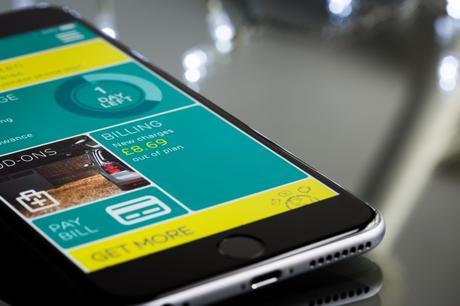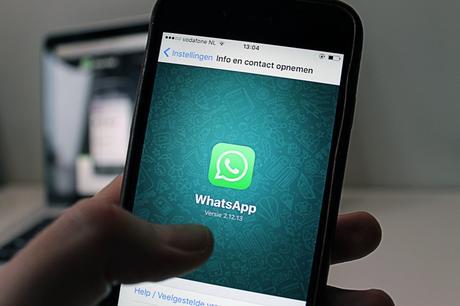The world of mobile apps is extremely fast and competitive, growing in both size and profit margins every year. If you’ve taken a stroll down Blog Avenue, you’ve probably seen every aspect of the app development process covered, from ideation to marketing. You’ve probably also noticed that a big chunk of these blog posts is focused on app design.

This may lead to an overestimation of the value of design within an app. Apps, like every other product, have to solve a problem. Imagine that you are really hungry, kind of starving. You order something to eat at a restaurant, but the food that arrives is not presented properly. Now that this is the only option you have at this point, what would you do? However, if the food has been presented well, but the quantity served is not enough to suffice your hunger, would it make any sense to spend time or money on it? At this point, your prime requirement is to satiate your hunger. You would not care if the food has been dressed well or not. Let us all agree to it that presentation matters a lot. Similarly, a good design attracts the eye, and there is no doubt to it but will that be enough if the need of the feature/product is unmet?
If the problem is widespread enough, and the solution offered by a particular app is effective enough, that app will most likely be a success (Of course should follow basic design standards and guidelines). This is as true for consumer apps as it is for enterprise apps.
The Function/Design Ratio
Considering that 84% of a user’s time is spent on just five apps, and that those five apps are most likely in the categories of instant messaging, social media and gaming, [1] developers might have a rough time getting their foot in the door. With this kind of numbers, it’s easy to see why developers fall in love with the idea of an amazing design for their app in the hopes of drawing attention.
This is not to say that design is a second-class citizen in the world of app development. It can give an app a considerable competitive edge if used right. However, the situation boils down to basic business sense. If you can spot a problem, and provide an adequate solution, you are already halfway to success. You then want to focus your attention on streamlining your app’s function, and adding features that complement said function. Finally, you want to make your user feel at home when they use your app. Intuitive design, that’s pleasant on the eyes and fun to use, will always improve an app. It will entice users and make them stay, but only if it is built on a very solid foundation of functionality that addresses a problem.
A concrete example would be Whatsapp. It has a very simple design that does not try to ‘wow’ users. Instead, the design focuses on clarity of function. The app was launched in 2009, a few months after the release of the iPhone, and it had one basic function: adding a status next to the user’s name. As the smartphone evolved, so did the app, until it became an instant messaging platform, fulfilling a need for free instantaneous messaging between users. As time went on, more functions were added, such as cross-platform messaging, image and audio messaging and so on.
Being established early on, and acquiring a large portion of the market, WhatsApp gained momentum, and it currently has over 1 billion users (as of February 2016). The app’s design had very little to do with its success. Instead, the success came from solving the right need at the right moment, in the right way.

The Exception that Proves the Rule
Design does play a bigger role in apps aimed at consumers, when compared to enterprise apps. This is especially true for gaming apps, and apps targeting younger audiences. While a simple design that streamlines functionality works very well for Instagram, where 22.9% of users are between the ages of 18 to 24, [2] it does not fit well with Snapchat, where 52% of users are aged 16 to 24 [3]. Snapchat focuses on a more ephemeral design, which has been called everything from silly to innovative. This type of design appeals much better to a younger audience than a more utilitarian design would. In the planning stages, you should be keenly aware of the audience that you intend to serve. If you are looking for a younger, consumer audience, investing in design is worthwhile.
Another example of this exception would be the Clear app. Clear has wonderful user interface that makes interaction with the app fun. As a “To-Do List”, it has plenty of competition from dozens of apps that fulfill the same function. Here we can see design being used to gain the competitive edge in a very saturated market.
Conclusion
In most cases however, design is best when it is sleek and streamlined, showcasing the function of the app and allowing users to interact with the app’s main features easily. The success of an app will always hinge on correctly identifying a problem and providing the solution to that problem. You then wrap that solution in a beautiful package, that draws in the eyes, drives up the downloads, and encourages users to stick around long enough to see what your app is made of.
“Features help in download decision while design helps in retention”
Finoit is a well-known IT services provider that prefers to keep abreast of the latest trends in the tech savvy world. It has delivered over 250 mobile apps on various platforms like Android, Windows Phone and iOS, and is quite capable of developing tailor made apps that could cater to client’s specific requirements.
Feel free to browse through Finoit’s website to know about all our services in detail or to avail any of our cost-effective application development services.
